It’s amazing how much stuff grows while you’re away on holiday. Despite employing a very good garden-sitter (Liz), there was a lot of stuff that needed cutting back etc. The photograph below shows the hard working gardener grappling with giant leaves of Tetrapanax papyrifera.
Succulents and Stones
As mentioned previously I seem to be having some success with growing succulents, things like Echeverias, Aloes etc. These plants look good in a surrounding of gravel / grit and I’ve found it quite fun to add interesting pebbles and shells that I’ve found on the beach etc. Some of these pebbles are, in fact, rocks and include stones that I’ve brought back from holidays. Some of the stones and shells I just throw onto the gravelled areas of the garden, they get lost in the gravel but become uncovered again and rediscovered again and bring back memories. I’ve now taken my stone gathering tendencies one stage further and request friends to bring me back stones and pebbles from their travels (at the time of writing this, I have stones from all over the world).
Below is an example of my ‘succulent stone area’. I won’t go into detail over where all the stones come from but the succulents include Echeveria, Aloe and Sempervivum: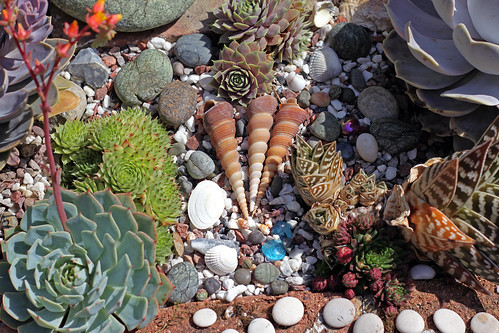
and below: an Aloe and Kalanchoe thyrsiflora 'Bronze Sulpture'.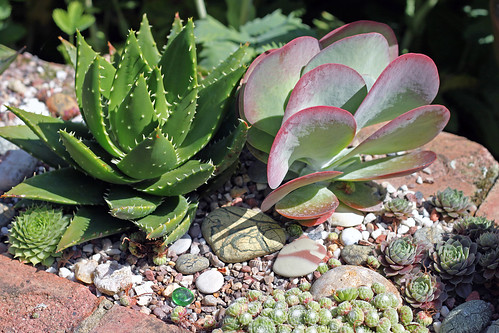
Ricinus communis - The true Castor Oil Plant
Early in the spring I bought a couple of young plants of Ricinus communis – the red leaf form which I think is ‘Carmentica’. I have grown them from seed before but as I only need a couple it is far easier to just get them from the local nursery. Their large red leaves mix very well with other foliage as shown in the photo below grown amongst Ensete 'Maurelii', Canna 'Striata', Melianthus major and others. The photo was taken at dusk: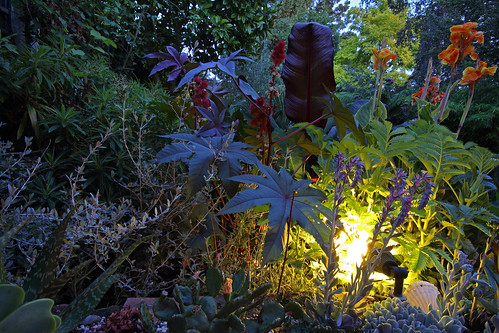
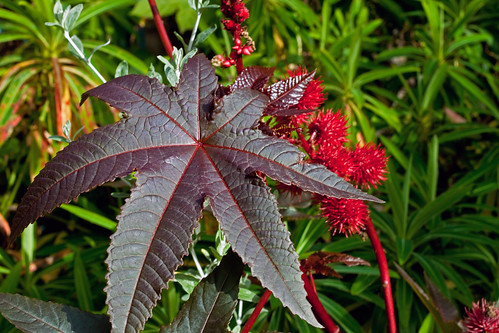
The photo above shows the colour of the leaf and also the seed pods behind.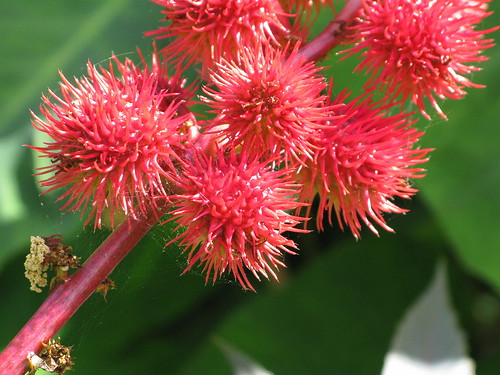
Above is a close-up of the seed pods – they are really quite striking and a little sinister. Castor oil is extracted from the seeds of Ricinus communis but so is also the poison ‘Ricin’.
Ricin is perhaps best known as the poison that killed Bulgarian dissident and BBC journalist Georgi Markov in 1978 in what became known as the ‘Umbrella Murder’. As Georgi Markov crossed London’s Waterloo Bridge he was jabbed in the calf by a man holding an umbrella The man apologized and walked away. That evening he developed a fever and was admitted to a hospital where he died three days later. The cause of death was poisoning from a ricin-filled pellet.Although the murderer was never identified, many believe KGB agents were responsible.

No comments:
Post a Comment